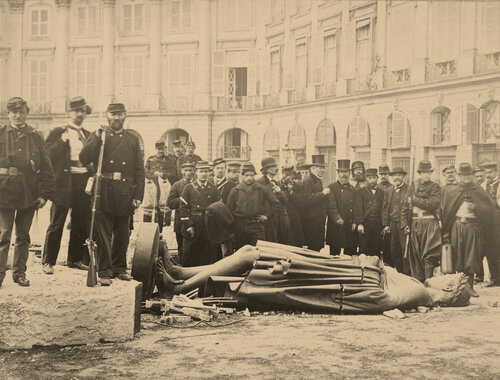Old News at the New Museum
It is full of work convinced that the world as we know it is doddering towards its end, but gives little consideration to the possibility that it is this old New Museum and old new media art, not the world around it, that has run its course.
Louise Lawler “LIGHTS OFF, AFTER HOURS, IN THE DARK” at Metro Pictures
It took the formula of one species of conceptualism to capture the swan song of another.
John Currin “Memorial” at Gagosian
They’re explicit pictures, and in a world so entirely scrubbed clean of transgression, any sense of naughtiness is its own form of pleasure. Dainty feet and hands poke out in flirty little kicks, one appendage in front of the trompe l'œil frame, the other receding behind. The effect is not unlike a peep show.
An Afternoon at MoMA
It’s hard to be the Museum of Modern Art when the modern has become a thing of the past and a rather suspect thing at that.
An Afternoon at the Met
But what of the museums themselves? The artworks, their placement, the hallways, the exhibits, the choreography of passing through?
RIP Trump Art
Artists of our generation are so hopeless that they would rather wish for fascism than confront the real challenge of the present.
Museums and Politics: A History of Disappointments, Part I
Why is it no longer self-evident that museums are valuable to anyone but professional artists, critics, administrators, and scholars? Why are the humanist values embraced by the artists of the Paris Commune now so suspect? Why are we so inclined to protest museums and curators, preening for their attention and permission?
On Art, Hopelessness, and Crisis, Part II
Art need not retreat from our moment to succeed as art, but it must not stoop to the remedial desire to change our moment. It is more than enough for works of art to register the human suffering the pervades our age. To register the suffering and paint nonetheless is a cry for a better world.
On Art, Hopelessness, and Crisis, Part I
We have been a society in despair for quite some time. And without meaningful social existence, without the political possibility of imagining a better world, what possibilities are there for art?
What Do Museums Have to Say to “The Public”?
The National Cowboy Museum’s Twitter feed in the hands of Director of Security Tim Tiller is the kind of voice we crave during the COVID-19 lockdown. Tim’s sincere charm cuts through the digital cacophony and has earned the Museum three hundred thousand plus Twitter followers and global platform. But more importantly, it’s the voice we’ve needed from art museums for a long time.
Damien Hirst: The Best Living Artist
While many artists today position themselves as critical outsiders vis à vis capitalism, Hirst embraces the fact that he — and everyone else — lives smack dab in the middle of it. Far from being capitalism’s uncritical playboy, Hirst delivers an immanent critique.
The Met at 150
For its entire modern history art was bound up in the possibility of freedom. So what happens when freedom no longer seems possible?
"A Revolutionary Impulse" @ MoMA
The fact is that the revolutionary impulse in art does not hew so cleanly to revolutionary politics.
“Political” Art: A Failed Project
Are we to accept that the field of artistic production — unique in its capacity to butt up against the world as it is and imagine a world as it should be — offers only an endorsement for a political stalwart?
Simone Leigh: The Waiting Room @ The New Museum
“The Waiting Room” is remarkable for its lack of concern with its institutional home and its disregard for questions of aesthetics.
Taste and Transformation
The disintegration of art criticism does not have a single locus. But it does coincide with another decline: the decline of the political Left as an active force in the shaping of history.

















